Calcium is a vital element of metabolic processes in the human body.
Calcium deficiency can cause nervousness and irritability; calcium deficiency leads to brittle nails and hair loss, promotes the development of caries, periodontitis, enamel hyperesthesia, osteoporosis and cardiac dysfunction.
The causes of calcium deficiency can be divided into groups:
- insufficient consumption
- insufficient absorption
- weakening of the body's defenses
AGE CHANGES IN BONE TISSUE
| Age | Changes | Recommendations |
| 15 | Calcium deposits in bone during pre-adolescence are 140-165 mg per day; during puberty, 400-500 mg per day. | During the period of growth and development, by consuming sufficient amounts of Calcium and exercising, you can build a strong skeletal system. The average daily calcium intake for ages 14 to 25 years should be 1500 mg per day |
| 30 | Peak bone mass. Bone metabolism is stable in both men and women. The rates of bone resorption and bone formation are approximately equal. | By meeting your daily requirement of Calcium (at least 1200 mg per day) and exercising, you can keep your skeletal system in excellent condition. |
| 50 | Bone resorption processes begin to predominate. | You should continue to exercise and maintain a daily calcium intake of at least 1000 mg (in the absence of severe medical illnesses) |
| 65 | In women after menopause, the rate of bone resorption increases and bone mass decreases. | The calcium content in the daily diet should be 600-800 mg. If intestinal absorption of Calcium is reduced due to gastrointestinal diseases and there is a lack of vitamin D (little sun and walks in the air), then the optimal calcium intake should be 1500 mg per day. Continue to exercise regularly. |
| 80 | The amount of bone tissue is below the threshold for fractures. | USE CAUTION! Fractures of the spine, wrist, and femoral neck are possible. |

What role does calcium play in the body?
First of all, calcium is a building material for bone and dental tissue. It contains from 1 to 1.8 kg of calcium (depending on age and gender), and this is 99% of the total element contained in the body.
Children need calcium for the proper formation of the skeleton, normal growth and development of teeth. For adults – to maintain the density and strength of bone tissue, which is constantly subject to microtrauma and needs to be restored.

Photo: istockphoto.com
The remaining 1% of calcium is found in cells and intercellular fluid. Here it is:
- performs a metabolic function: supply of nutrients and cellular detox;
- transmits information between cells;
- responsible for muscle contractions, including heart rate;
- has anti-inflammatory and antiallergic effects.
CALCIUM CONTENT IN FOOD
| Product | Weight or volume | Calcium content |
| Milk | 1 cup (250 ml) | 240 mg |
| Kefir | 1 cup (250 ml) | 240 mg |
| Curdled milk | 1 cup (250 ml) | 240 mg |
| Hard cheese | 20 g | 120 mg |
| Yogurt from whole mol. | 1 cup (250 ml) | 240 mg |
| Sour cream | 15g (1 tbsp) | 16 mg |
| Low-fat cottage cheese | 1 cup (250 ml) | 300 mg |
| Cottage cheese 5% | 1 cup (250 ml) | 325 mg |
| Cream 30% | 1 cup (250 ml) | 200 mg |
| Sardine | 100 g | 96 mg |
| Oysters | 100 g | 90 mg |
| Rye bread | 100 g | 45 mg |
| Persimmon | 100 g | 127 mg |
| Beans | 100 g | 110 mg |
| Beans | 100 g | 120 mg |
| Variegated beans | 100 g | 150 mg |
| Peas | 100 g | 50 mg |
| Oatmeal | 100 g | 64 mg |
| Buckwheat | 100 g | 70 mg |
| Almond | 50 g | 125 mg |
| Hazelnut | 100 g | 113 mg |
| Walnut | 100 g | 44 mg |
Small amounts of Calcium are found in fresh greens:
dill, parsley, lettuce, spinach, green onions, celery.
All figures presented must be adjusted for the quality of the starting products and the method of preparation.
An excellent natural source of Calcium for humans is eggshells!
Eggshells are 90% calcium and contain another 27 microelements:
copper, fluorine, iron, manganese, molybdenum, phosphorus, sulfur, zinc, etc.
You can prepare the powder from the shells of boiled or raw eggs. Powder from the shells of raw eggs will be better absorbed, but it needs to be poured with lemon juice (until completely dissolved) and only then taken.
And powder from the shells of boiled eggs can be sprinkled into the second dish.
The average daily dose is 1 teaspoon per day, throughout the year.

Treatment of Ca deficiency
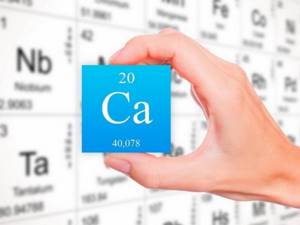
The disease can occur in acute and chronic form. An acute condition requires treatment in a hospital setting, as it threatens the patient’s life. In case of chronic calcium deficiency in the body, synthetic calcium-containing preparations, vitamin and mineral complexes are prescribed, the diet is adjusted to increase the intake of microelements in food, and concomitant pathologies are treated. To speed up metabolic processes, sufficient physical activity is recommended.
Calcium deficiency cannot be treated on your own. Self-medication is especially dangerous during pregnancy or childhood. An overdose of calcium in the body, which occurs from uncontrolled intake of calcium supplements, can pose a serious health hazard. You should take any medications only after examination and consultation with a specialist.
At a medical clinic, you can undergo a comprehensive examination to determine the level of calcium in the body and, based on its results, receive qualified consultation from a doctor. It is important to remember that uncontrolled use of calcium supplements is dangerous to health. Without determining the degree of calcium deficiency, the causes of pathology, identifying and treating diseases that could provoke a lack of the mineral, you cannot take calcium supplements. Treatment of complications of the disease may also be necessary, and this should also be done by a specialist. You can make an appointment by phone: +, +.
INSUFFICIENT ABSORPTION OF CALCIUM
Insufficient absorption of Calcium is due to several reasons:
- chronic gastrointestinal diseases (gastritis, colitis, dysbacteriosis, etc.)
- toxic effects of various substances
- drinking caffeinated drinks
- vitamin D deficiency
- decreased immunity
The toxic effect of substances disrupts the absorption of Calcium due to increased excretion or impaired absorption in the intestine. The products of combustion of tobacco, alcohol, long-term use of medications, excessive absorption of salt, canned food, sausages, and the predominant consumption of coarse fiber foods play a detrimental role.
The consumption of drinks containing caffeine is increasing every year, despite their harm! Caffeine is a calcium antagonist! Every sip of an energy drink weakens you! If you like cola, you are at risk of osteoporosis! Coffee lovers, think twice!
The calcium that is WASHED out by two small cups of coffee can be replenished with 0.5 liters of milk!
Vitamin D deficiency occurs in the autumn-winter period due to lack of sunlight. Try to walk in the fresh air for at least two hours every day, receiving diffuse ultraviolet light. The lack of vitamin D can be compensated by eating fatty sea fish: salmon, salmon, trout, caviar and liver of sea fish.

How to understand that the body does not have enough calcium?
Today, 40-60% of the population is calcium deficient, notes the nutritionist. It is often caused by a carbohydrate type of diet (porridge, flour and sweets instead of meat, fish, cottage cheese), an abundance of trans fats (margarine, mainly in industrial confectionery and flour products), taking hormonal contraceptives, as well as chlorination of water.

Photo: istockphoto.com
At the same time, taking a blood calcium test is pointless: if there is a deficiency, it is washed out of the bone tissue to maintain its normal level in the blood. To diagnose hypocalcemia, the level of parathyroid hormone in the blood is checked.
The first symptoms of a lack of this element:
- fatigue;
- general weakness;
- drowsiness even with sufficient sleep;
- fast fatiguability;
- decreased immunity;
- tendency to bleed, for example from the nose or bleeding gums;
- causeless appearance of bruises.
If measures are not taken at this stage, you may then notice brittle hair, deterioration in the quality of nails, tooth enamel will become more fragile, and caries will appear.

Chronic fatigue: how to get rid of a syndrome that prevents you from living fully
What causes calcium deficiency?
Macronutrient deficiency is possible not only with a poor diet. Sometimes even people who eat high-quality foods high in calcium suffer from hypocalcemia. This may be due to:
- Absence or insufficient intake of vitamin D. The fact is that the substance is well absorbed only in tandem with vitamin D. That is why pediatricians prescribe Aquadetrim or other drugs based on vitamin D3 for children in the first year of life.
- Consumption of sodium in large quantities. Excess potassium and magnesium also interfere with the absorption of macronutrients. Also, people who consume excessive quantities of foods containing oxalic acid may suffer from its deficiency. These include:
spinach, rhubarb, sorrel, currants and gooseberries.
- Chronic kidney diseases.
- Consumption of large doses of phosphorus (found in soft drinks and all kinds of food additives).
- Lack of calcium in the body due to autoimmune diseases.
- Taking certain medications: proton pump inhibitors, anticonvulsants.
Partially calcium compounds become soluble under the influence of hydrochloric acid in gastric juice. In order not to think about how to compensate for the lack of calcium, it is necessary to monitor the functioning of the gastrointestinal tract. Quite often, various disorders in their work are detected in obese people.
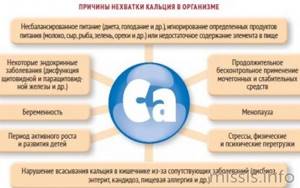
Diagnosis of calcium deficiency
Identifying and correcting mineral imbalances in the early stages can be difficult. Clinical symptoms are not very precise. The symptoms of hypocalcemia largely coincide with the manifestations of other diseases.
A general blood or urine test provides almost no accurate information on this problem. It is impossible to know how much of the substance is absorbed by the body, because with a small intake of calcium, it still enters the blood, as it is washed out of the bones.
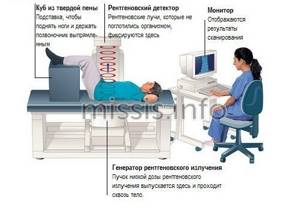
Low levels of the element in the blood may be associated with a decrease in serum protein, and not with a lack of the mineral. There are 3 types of laboratory tests that allow you to more accurately and reliably determine the amount of calcium in the body:
- analysis of the mineral composition of hair shows the amount of trace elements in the tissue;
- Densitometry determines bone density and structure;
- The level of ionized calcium in the blood is checked using a blood test.
To be sure of the correct diagnosis, it is necessary to conduct an accurate laboratory test
. If osteoporosis is suspected, an x-ray examination should be performed.
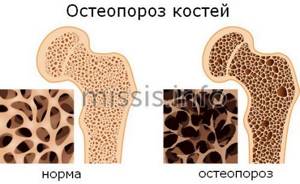
Benefits of calcium fortified foods
Calcium is the main building material of the body. Its positive effect is the formation of teeth and bones. In order for a child to have an even, full-fledged skeleton, it is important to provide the baby with a sufficient amount of this microelement.
Calcium is an integral component of cells, blood, tissues, helps strengthen the walls of blood vessels, promotes blood clotting. It prevents pathogenic bacteria and viruses from entering the blood.
This element, together with magnesium, sodium, potassium, stabilizes blood pressure, strengthens the immune system, and has an anti-allergic and anti-inflammatory effect on the body.
Calcium has a positive effect on the nervous system. It is involved in the transmission of impulses by neurons to brain cells, stabilizes the processes of inhibition and excitation. A lack of microelement leads to loss of good mood and causeless aggression.
Calcium affects the process of muscle contraction. It is thanks to it that the heartbeat stabilizes and the necessary acid-base balance is maintained.
Calcium for Vegans
The main source of calcium in the human diet is dairy products, which are excluded from the diet of vegans. Therefore, they are at greater risk of calcium deficiency and decreased bone density than non-vegans.
Photo by Ella Olsson / Unsplash
Contrary to popular belief, plants can also provide the body with calcium. For example, soy milk and other milk substitutes and dairy products are often fortified with calcium. Some studies show that a balanced vegan diet can maintain bone density equal to that of people with a regular diet.
Plant sources of calcium include:
- Bread fortified with calcium
- Soy products, especially those labeled "fortified with calcium"
- Calcium-fortified plant-based drinks: soy, almond, rice milk
- Dried fruits, such as figs, raisins, dried apricots
- Seeds: chia, pumpkin seeds, sesame seeds
- Legumes
- Oranges
- Broccoli
Form
Literature
- VC. Bauman, “Biochemistry and physiology of vitamin D” Riga, Zinatye, 1989, 480 p.
- Fleisch, Bisphosphonates in bone disease, 1997, London, 184p.
- Feldman, D., and Mallon, P. J. and Gross, C. (1996). Vitamin D: metabolism and action.In Marcus, R., Feldman, D. and Kelsey, J. (eds) Osteoporosis, pp.205-35. (San Diego: Academic Press).
- Bushinsky, D. A. and Krieger, N. S. (1992). Integration of calcium metabolism in the adult. In Coe, FL and Favus, MJ (eds.) Disorders of Bone and Mineral Metabolism, pp.417-32. (New York: Raven Press).
- O.G.Arkhipova, E.A. Yuryeva, N.M. Dyatlova, “Prospects for the use of xydiphone”, J. Vses. chem. total them. DI. Mendeleeva, 1984, XXIX, 3, pp. 76-80.
- T.A. Matkovskaya, N.P. Tatarnikova, etc. Pat. RF RU 2124881 C1.
- E.A. Yuryeva, I.P. Dunaeva, G.I. Kulakova “The effectiveness of xydiphone depending on the method of its use”, In: New chelating agent xydiphone. Pharmacology, toxicology and therapy. Moscow, 1990, pp. 62-70.
(The article is abbreviated. The full text was published in the journal: Cosmetics and Medicine, 1999, No. 5/6, p. 71.)
Leaching calcium from the spine. Causes, tips and prevention.
In order to understand this problem more deeply, we need to find out what can influence the leaching of this material from the body.
Possible causes of calcium deficiency in the body
Its need is greatest in childhood, when the human body grows and develops. To cover the cost, a person needs to receive at least one gram per day. There are a number of reasons why calcium can be washed out of bones.
- Passive lifestyle. If a person’s activity is minimal, then many processes slow down, fat cells accumulate, and metabolism is disrupted.
- The body may not absorb this element well due to aging. Since our body is constantly aging, this slows down its working mechanisms. There is a decrease in the production of protein and elastin. Many doctors believe that this is most noticeable in women 40–45 years old.
- Problems with hormones. Hormones play a crucial role; they are responsible for the absorption of calcium and the rejuvenation of bone cells. If their production is not large enough, leaching of the mineral may occur.
- Violation of acid-base balance. If the body has this problem, then it tries to reduce acidity with the help of calcium and bring it back to normal. In this case, the consumption of the element increases many times over.
- Vitamin D3. The most important factor, without which calcium absorption is generally impossible. Typically, deficiency can occur in people who lack sunlight.
- Poor nutrition. A rather serious factor under which the following points unfold:
A) Too much fat consumption
B) In multitasking mode, coffee is an integral part of life. However, excessive consumption triggers a number of important processes that can serve as a source of consumption: the production of adrenaline and an increase in energy. These actions greatly increase the consumption of calcium from the body. Since caffeine has a diuretic effect, useful substances leave the body with the release of urine.
C) A small amount of protein in the food taken. Protein serves as the basis of the entire body, it makes bones stronger, participates in the process of cell renewal, as well as improving muscle tissue. Animal proteins play an important role for humans; they have a greater value than plant proteins.
D) The following types of food repeatedly deplete mineral reserves: spicy, sour, sweet and salty.
D) If you spend a long time warmly processing food that is enriched with calcium, you can lose a significant part of this element, as well as other useful substances.
E) The release of calcium can be hindered by foods with the addition of various chemical elements (sweeteners, enhancers, etc.). If they are present, the absorption of calcium in the body may also slow down.
Which group of people is more susceptible to calcium leaching?
Pregnant women are mainly susceptible to calcium leaching. Since their body gives most of it to the formation of fetal health. There is a possibility of calcium loss during menopause, because many factors appear that contribute to this process.
Elderly people are also susceptible to this disease, but from a physiological point of view. Due to calcium imbalance, bones become very fragile. It is worth noting that for men this period begins much later than for women, after 65 years.
Doctors recommend
Many professionals believe that calcium leaching can be both slowed down and prevented. You just need to follow a few simple recommendations to help your spine.
1. Products in the diet.
Every day a person should eat foods that contain large amounts of the mineral, plus it should be easily digestible. If possible, vitamin D should predominate.
Nutritionists believe that the main favorite in terms of content is eggshells, not eggs, but shells. In order for the body to receive sufficient daily needs, it is necessary to eat one-half teaspoon of crushed shells. Canned fish is also a tasty and healthy option. It is closed right with the bones, and they serve as a wonderful source of calcium. If possible, you should include products such as nuts, herbs, cheese, milk and even soy in your grocery basket.
To add vitamin D to your body, you can eat fish, red caviar and beef, as well as liver, egg yolk and mushrooms.
2. Preparations fortified with calcium.
Before taking various medications, you should consult your doctor, as there may be various side effects, including overdose. They mainly focus on those containing elements such as zinc, magnesium, phosphorus and vitamins D and C.
Various doctors agree that many of these drugs should be taken during the formation of the skeleton and growth of the body. According to scientists, this is somewhere between 20 and 25 years. It is especially recommended for pregnant women, as well as those who have reached menopause. All these solutions help delay the development of bone diseases in people who have reached 50 years of age.
3. Active lifestyle.
Prevention measures
It is important to understand that this disease is quite serious and if it is not stopped in time, there may be consequences.
You need to constantly monitor your health, from your youth. Many diseases due to calcium loss can appear very quickly and unpredictably.
It is worth visiting a doctor regularly, as well as at the first signs of illness, so that appropriate treatment can be carried out.
Author: K.M.N., Academician of the Russian Academy of Medical Sciences M.A. Bobyr
How to determine if you have hyperkalemia?
The main store of calcium in our body is bones. If there is a deficiency of this element in our food, the body first painlessly borrows from there. A long-term lack of dietary calcium can lead to osteoporosis. According to statistics, we consume an average of 400 mg of calcium with food, although physiological needs reach 1200 mg per day. Symptoms of calcium deficiency in the body:
- development of osteoporosis, frequent fractures;
- decreased growth over time;
- deterioration of teeth;
- brittle nails;
- loss of sensitivity in the hands and feet;
- periodic seizures;
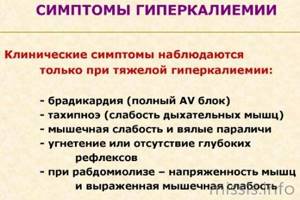
- painful menstruation;
- increased nervousness, irritability, anxiety;
- sleep disturbance;
- increased fatigue, decreased mood;
- decreased mental activity;
- allergic manifestations, eczema;
- cardiopalmus;
- frequent colds, exacerbations of chronic diseases;
- Gastroesophageal reflux often develops.
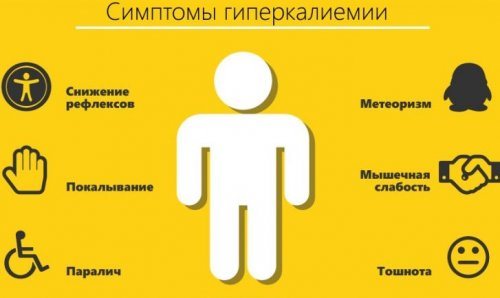
Due to the high needs of the body, it is necessary to include calcium-rich foods in the diet every day. Almost half of the calcium comes to us through dairy products. Most of it comes from cheese, milk and yogurt. It is quite problematic to satisfy the need with the help of other products, so it is often recommended to enrich the diet with dietary supplements and calcium supplements.






